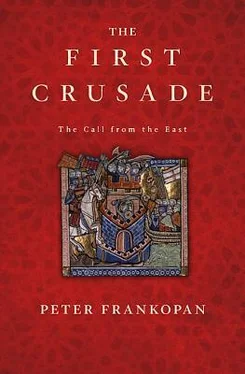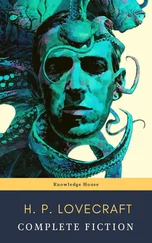Not everyone had done well from the expedition. Stephen of Blois and Hugh of Vermandois had both left the western force to convey news to the emperor Alexios before and after the capture of Antioch respectively; neither rejoined the Crusader army, choosing instead to head home. In order to fulfil their vows to reach Jerusalem, both men set off again, taking part in the ill-fated campaign of 1101, yet they both died without reaching their destination. While Hugh was celebrated as an excellent soldier who died a martyr, 7Stephen of Blois was lampooned in the popular songs about the Crusade, held up as a traitor and a buffoon. 8
Many Crusaders did not make it home. Although it is difficult to assess the numbers of casualties during the expedition, it is clear that a substantial proportion of those who set out died on the way to Jerusalem, whether victims of disease or killed in battle; including deserters, perhaps as many as three-quarters never made it to the final destination. 9For those left behind, not knowing the fate of their loved ones proved a heavy burden. The wife of Baldwin of Hainault, for example, was devastated to hear that her husband had disappeared after being sent to the emperor together with Hugh of Vermandois in 1098. While there were reports that he had been killed, there was also news that he had been captured and was alive. Having exhausted all avenues of investigation and refusing to give up hope, Ida set out for the Holy Land herself to look for her husband. This was just one of many stories of loss during that time. 10
Of those who did return, it was Bohemond who stood out above all. His exploits during the Crusade, in particular his courage in battle, marked him out as the idol of the campaign. Reports of his bravery and resolve when facing the armies of Kilidj Arslan, Duqaq, Ridwan and Kerbogha had made him a legend before he even reached the shores of Italy. There were many exotic stories about his exploits in the aftermath of the fall of Antioch and Jerusalem – his captivity at the hands of the Danishmenids and his secret communications with his fellow Crusaders from prison; his wooing of his captor’s daughter to secure his own release; 11or the tale that the Turks referred to him as the ‘little god of the Christians’. 12
The cult that was built up around Bohemond and his adventures immediately after the Crusade owed much to the wide circulation of the Gesta Francorum et aliorum Hierosolimitanorum – ‘The deeds of the Franks and the others who reached Jerusalem’. Ostensibly written by a member of the expedition from southern Italy who travelled east in 1096 before joining the contingent of Raymond of Toulouse at Antioch, it became wildly popular in the early twelfth century. Its central character was Bohemond. 13
By the time that the Norman arrived back in Europe at the end of 1105, he was not just a member of the successful expedition; he was its undisputed hero. He was more prominent than any of the other leaders, his exploits commemorated in more detail and with greater resonance than those of his peers. There was some irony in the fact that Bohemond had not been present at the fall of Jerusalem, refusing to move from Antioch for fear of losing control of the city. Indeed, he had only completed his Crusade vow to reach Jerusalem in the winter of 1099, making sure that he travelled south with Baldwin of Bouillon to prevent Alexios’ principal client making a move on Antioch in his absence. 14But this did nothing to dim his star.
On his arrival in Italy, Bohemond was received by Urban’s successor, Pope Paschal II. In a letter to the Pope he referred to himself as ‘prince of Antioch’, using this high title regularly after his return home. 15Still unmarried, Bohemond was seen as the best catch in Europe, the epitome of the early medieval knight: handsome, brave, adventurous and selfless.
Eligible heiresses were soon being lined up for him to choose from. One who should not have been included was Constance of France, daughter of King Philip I, who was already engaged to Hugh of Troyes, Count of Champagne. Yet such was Bohemond’s cachet that Constance speedily abandoned her fiancé, who was promptly declared to have been an unsuitable match – though what he had done to deserve such a slur was unclear. 16Having not taken part in the expedition himself, Constance’s father was more than happy to bask in the reflected glory of the famed Crusader and eagerly gave his blessing to the match.
Bohemond did not need to think twice about marrying the most powerful woman of her generation, whose grandparents included the king of France, a princess of Kiev, and the counts of Holland and of Saxony. In the spring of 1106, a lavish ceremony took place in Chartres cathedral, attended by the great and the good of France, including men who had fought alongside Bohemond in Asia Minor and Syria – and many more who wished they had. 17
Bohemond was becoming unstoppable. Before the wedding, he had begun recruiting men for his new expedition to the east. He obtained a papal blessing for his campaign, and was given the banner of St Peter to carry into battle as well as a legate to help gather further support. 18According to one author, the Pope was prompted to give his backing to Bohemond’s campaign against Byzantium after hearing what a disaffected legate to the east had to say about Alexios. 19More plausible, however, is that Paschal II did not sanction an all-out assault on the Byzantine Empire at all, but what seemed to be a major initiative to support the Holy Land – at least to start with. The Pope does not appear to have harboured animosity towards the Greek church, to Byzantium or to Alexios, and the assistance he provided should be seen in this light. 20
Bohemond’s ambitions, conversely, were unambiguous as his call to arms accelerated. Travelling extensively over the course of 1105–6, he promised those willing to follow him that they would take part in victories no less spectacular than those at Nicaea, Antioch and Jerusalem. His first targets: Dyrrakhion and then Constantinople. 21With his new royal connections to help him, he gathered a substantial force in southern Italy in 1107 and prepared to launch his attack on Byzantium’s western flank.
Men flocked to join Bohemond from all four corners of the world, wrote Orderic Vitalis, eager not only to deprive Alexios of his empire but to kill him too. 22Bohemond was an effective propagandist against Alexios, regaling spellbound church congregations with stories of his exploits, urging his listeners to take the Cross and set out for Jerusalem – but attacking the emperor of Constantinople first. 23In a letter sent to the Pope, Bohemond crudely underlined a long list of supposed heresies perpetrated by the Orthodox Church to justify action against fellow Christians. 24
Yet in England Bohemond’s appeals fell on stony ground. Having informed King Henry I that he wished to cross the Channel to look for support, he was bluntly told that he was not welcome. The king replied simply that it was wintertime and that the crossing would be too rough for the Norman. 25It may be that Henry I was unwilling to share his military resources with Bohemond at a time when the king of England had extensive designs of his own, namely in Normandy. But the king might have had other reasons for refusing to let Bohemond into England. At some point in the early twelfth century, he received an embassy from Constantinople led by a certain Ulfricus who brought precious gifts from Alexios, which are likely to have included an arm of St John Chrysostom that was later housed in Abingdon. It is not inconceivable, therefore, that the emperor had been looking for allies to neutralise Bohemond’s activities. 26Certainly, there is other evidence that Alexios continued to cultivate important relationships in western Europe in the aftermath of the Crusade. 27
Читать дальше











